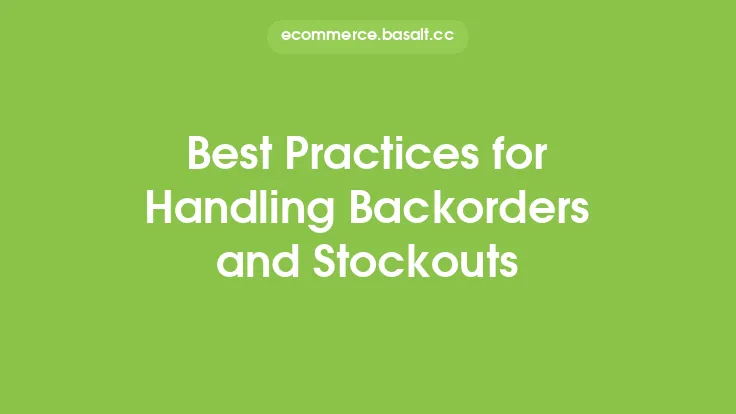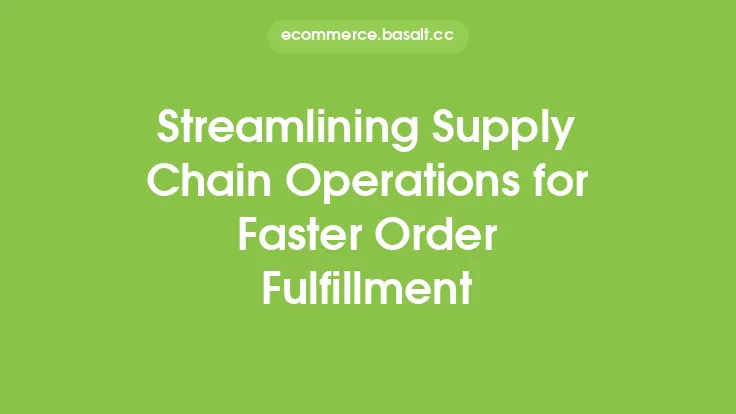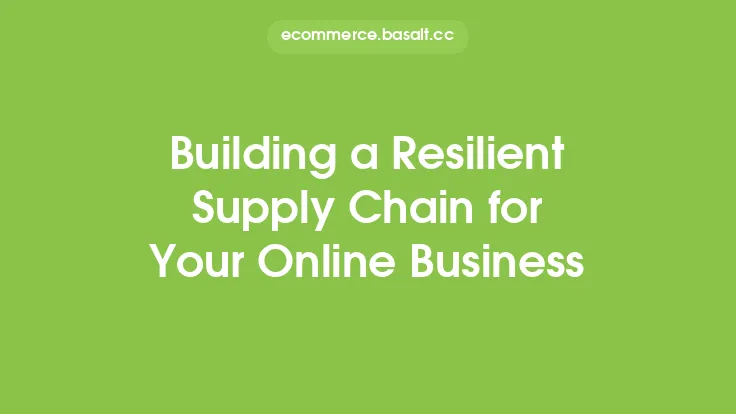In today's fast-paced and competitive e-commerce landscape, effective supply chain collaboration and communication are crucial for businesses to stay ahead of the curve. A well-coordinated supply chain enables companies to respond quickly to changing market demands, reduce costs, and improve customer satisfaction. However, achieving seamless collaboration and communication among supply chain partners can be a daunting task, especially for small to medium-sized enterprises. In this article, we will delve into the best practices for supply chain collaboration and communication, providing valuable insights and practical tips for e-commerce businesses to optimize their supply chain operations.
Introduction to Supply Chain Collaboration
Supply chain collaboration refers to the process of working together with suppliers, manufacturers, logistics providers, and other stakeholders to achieve common goals and objectives. Effective collaboration enables companies to share resources, expertise, and risk, leading to improved supply chain efficiency, reduced costs, and enhanced customer satisfaction. To foster successful collaboration, e-commerce businesses must establish strong relationships with their supply chain partners, built on trust, transparency, and open communication.
Benefits of Supply Chain Collaboration
The benefits of supply chain collaboration are numerous and well-documented. Some of the most significant advantages include improved supply chain visibility, reduced lead times, and increased agility. By working together, supply chain partners can share information, coordinate activities, and respond quickly to changing market conditions. Additionally, collaboration enables companies to leverage the expertise and resources of their partners, leading to improved product quality, reduced costs, and enhanced customer satisfaction. Furthermore, supply chain collaboration can help businesses to mitigate risks, such as supply chain disruptions, and improve their overall resilience.
Effective Communication Strategies
Effective communication is the foundation of successful supply chain collaboration. E-commerce businesses must establish clear and open communication channels with their supply chain partners, ensuring that all stakeholders are informed and aligned. Some effective communication strategies include regular meetings, email updates, and the use of collaboration tools, such as project management software and supply chain visibility platforms. Additionally, companies should establish a clear communication protocol, outlining the frequency, format, and content of communications, to ensure that all stakeholders are informed and engaged.
Building Trust and Relationships
Building trust and relationships with supply chain partners is critical for successful collaboration. E-commerce businesses must invest time and effort in establishing strong relationships with their partners, based on mutual respect, trust, and open communication. Some strategies for building trust and relationships include regular face-to-face meetings, joint training and development programs, and social events. Additionally, companies should prioritize transparency and honesty in their communications, ensuring that all stakeholders are informed and aligned.
Collaborative Planning and Forecasting
Collaborative planning and forecasting are essential for effective supply chain collaboration. E-commerce businesses must work closely with their supply chain partners to develop shared plans and forecasts, ensuring that all stakeholders are aligned and informed. Some strategies for collaborative planning and forecasting include joint business planning, sales and operations planning, and demand planning. Additionally, companies should leverage advanced analytics and forecasting tools, such as machine learning and artificial intelligence, to improve the accuracy and effectiveness of their planning and forecasting processes.
Supply Chain Visibility and Transparency
Supply chain visibility and transparency are critical for effective collaboration and communication. E-commerce businesses must have real-time visibility into their supply chain operations, enabling them to track shipments, monitor inventory levels, and respond quickly to disruptions. Some strategies for improving supply chain visibility and transparency include the use of supply chain visibility platforms, GPS tracking, and RFID technology. Additionally, companies should prioritize transparency in their communications, ensuring that all stakeholders are informed and aligned.
Performance Metrics and Monitoring
Establishing performance metrics and monitoring systems is essential for effective supply chain collaboration. E-commerce businesses must track and measure their supply chain performance, using key metrics such as lead time, inventory turnover, and order fulfillment rates. Some strategies for establishing performance metrics and monitoring systems include the use of supply chain performance management software, regular reporting and analysis, and continuous improvement programs. Additionally, companies should prioritize data-driven decision-making, using insights and analytics to inform their supply chain strategies and optimize their operations.
Overcoming Challenges and Barriers
Despite the benefits of supply chain collaboration, e-commerce businesses may face several challenges and barriers, including cultural and language differences, technological limitations, and conflicting priorities. To overcome these challenges, companies must prioritize open communication, flexibility, and adaptability. Some strategies for overcoming challenges and barriers include regular communication and feedback, joint problem-solving and conflict resolution, and continuous training and development programs. Additionally, companies should prioritize building strong relationships with their supply chain partners, based on trust, respect, and mutual understanding.
Conclusion
In conclusion, effective supply chain collaboration and communication are critical for e-commerce businesses to stay ahead of the curve in today's fast-paced and competitive landscape. By establishing strong relationships with their supply chain partners, prioritizing open communication and transparency, and leveraging advanced technologies and analytics, companies can improve their supply chain efficiency, reduce costs, and enhance customer satisfaction. By following the best practices outlined in this article, e-commerce businesses can optimize their supply chain operations, achieve their goals and objectives, and succeed in the ever-changing world of e-commerce.





